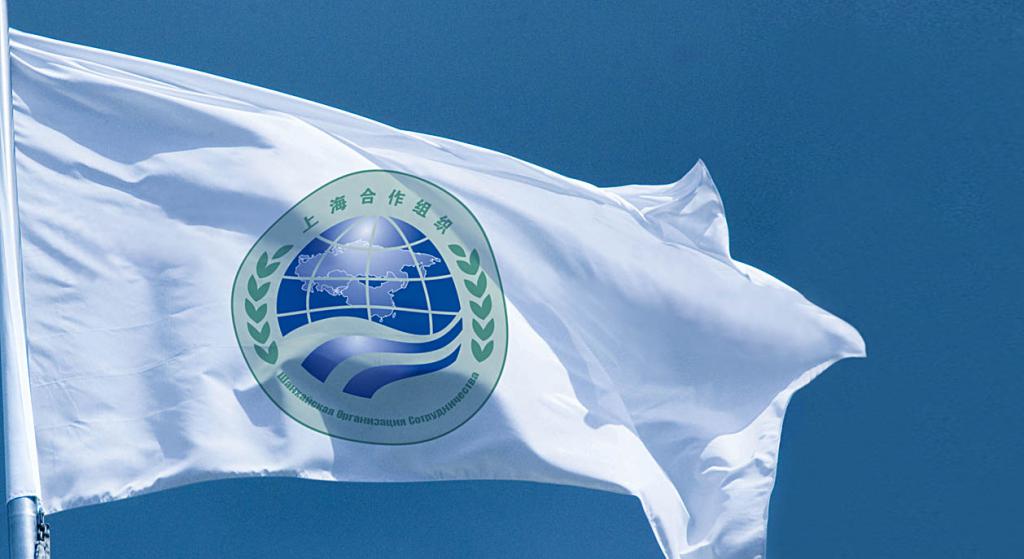World history knows many examples when countries created special interstate structures in order to solve pressing problems. There were many reasons for the desire to join efforts. Most often, unions were created against the backdrop of a worrying international situation. Sometimes the grandeur of the tasks facing the countries prompted this. However, a common condition was always the commonality of interests, the similarity of views on the current state and the development of the geopolitical situation. It was this principle that became the basis for the unification of the SCO member states, which created a new organization in 2001.
Western politicians were very skeptical about the prospects for an alliance between such different states. However, he has already managed to prove his relevance and consistency.
What is the SCO?
Everyone knows about the purpose and principles of the organization of the UN, NATO, and OSEAN. What is hidden behind the SCO letters? Deciphering the abbreviation is simple. It contains an abbreviation formed on behalf of the city in which the fundamental documents and a general description of the association were signed. The full official name of the structure is the Shanghai Cooperation Organization.
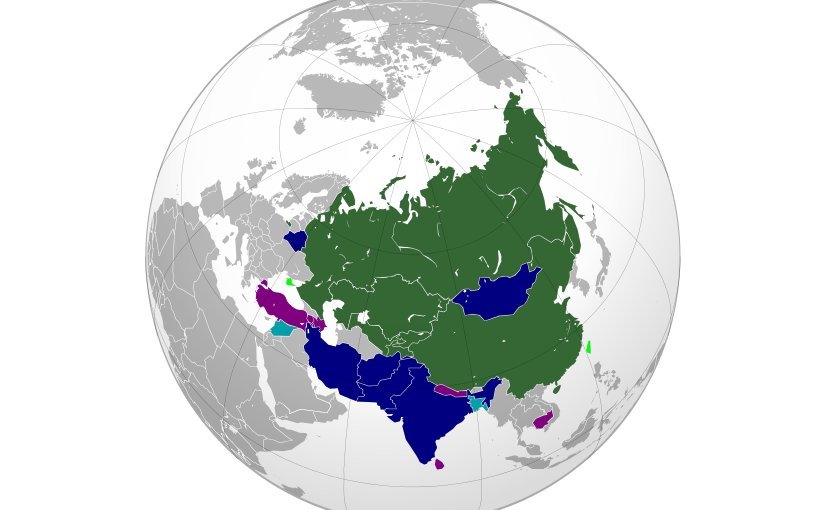
Initially, the alliance was created to jointly combat international terrorism and consolidate opposition to potential military threats. Gradually, the range of topics discussed expanded. Today it is a convenient platform for summit consideration of any pressing issues. Here, effective responses to global political challenges are worked out, decisions are made to deepen economic and cultural cooperation between the participating countries. At the same time, the SCO, unlike many regional alliances, is not a military alliance.
Creation Background
The emergence of a union like the Shanghai Cooperation Organization should be considered a historical inevitability. After the collapse of the USSR, several new independent states appeared in Central Asia. Part of the former Soviet republics, according to tradition, gravitated to Russia. Some countries have chosen to focus on the West or Eastern hegemon - China. Such a situation is fraught with conflicts, the emergence of which becomes only a matter of time, given the presence of long-standing territorial claims against each other in a number of neighboring states.
Demonstrating political foresight, the leaders of Russia, China, and the Central Asian republics from the end of the last century began to actively cooperate in the field of ensuring common security. The result of the joint efforts was the creation of the "Shanghai Five" in 1996. The founders of the interstate structure were Kazakhstan, the Russian Federation, China, Tajikistan, and Kyrgyzstan. A little later, Uzbekistan joined them. Members of the association held annual summits, established cooperation at different levels.
Institution
The official founding date of the SCO is June 15, 2001. On this day, the top leaders of the participating countries gathered at the summit in Shanghai signed the basic documents of the organization. They were the Declaration on Creation and the Convention for the Suppression of Separatism, Extremism, and Terrorism. A year later, already in St. Petersburg, the Charter was adopted - the Charter of the organization. After that, the whole world learned about what the SCO is.
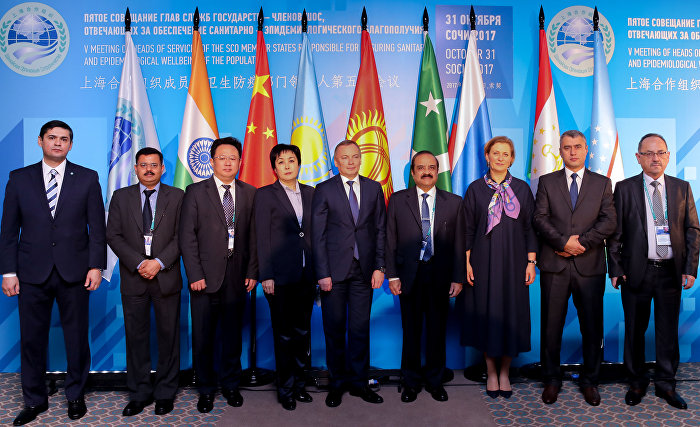
Several years were spent on the formation of managerial structures. The main directions of the association’s activities, ways of filling the budget were determined, a mechanism for accepting new members was developed. The establishment of organizational institutions was completed by 2004.
Declared Goals
The organization was created to solve specific problems. The main goals of the SCO, fixed in the basic documents, are:
- Strengthening good neighborly relations between the participants of the association.
- The development of effective measures that can minimize threats from extremist, separatist, and terrorist organizations.
- Counteraction to the activities of transnational criminal syndicates, drug cartels, suppression of illegal migration.
- Joining efforts aimed at improving overall security, preventing new and speedy settlement of ongoing armed conflicts. The establishment of a fair world order in which political and economic sovereignty is guaranteed to every state.
- The development of interaction in all areas - from deepening economic ties to cultural exchange.
- Creating conditions that are most favorable for the economic development of the region and each individual SCO country.
- Ensuring fundamental rights and freedoms to citizens of the states that make up the organization, based on current legislation and national traditions.
- Development of relations with countries or alliances showing interest in cooperation with the SCO.
- Development of mechanisms for integration into the global economy without loss of commodity-money sovereignty.
The creation of the SCO, in the opinion of its founders, will help countries that have combined opportunities to give a worthy answer to any challenges.
Structure Features
To facilitate the management of a very bulky supranational organization, a rather effective mechanism has been created. Each of its elements is endowed with certain powers. The structure is as follows:
| Organ | Representation | Functional |
| SGH - Council of Heads of State | Senior government officials | Determines the goal setting of the SCO. It solves the most important issues regarding organization, cooperation with external alliances, individual states. It can change the status of a member country, abolish or transform any structural unit. |
| CGP - Council of Government Leaders | Prime ministers | Considers specific issues for the establishment and deepening of economic cooperation. Accepts the organization’s budget. |
| Ministerial Council of Foreign Ministers - Council of Foreign Ministers | Foreign ministers | He is preparing for the meeting at the summits of the first persons of the states. Exercises control over the implementation of key political decisions of the SCO. Holds consultations on important international issues. |
| Meetings of line ministers | Heads of departments and ministries in areas | It solves highly specialized issues of a legal, military, and economic nature. Meetings of ministers of trade, defense, culture, communications are held regularly. Heads of prosecutor's offices and law enforcement agencies gather for meetings. |
| Secretariat | Representatives of the SCO member countries | It deals with all issues related to ensuring the current activities of the association - from developing the summit agenda to budget execution. The structure is led by a Secretary General, selected on a rotational basis. |
| SNK - Council of Coordinators representing countries | Authorized representatives from each member of the organization | Coordinates and directs the work of the secretariat, participates in solving current problems. He is engaged in preparations for the Ministerial Council, the CST, the CGS. |
| RATS - an analogue of the regional anti-terrorism center | Heads of national counterterrorism structures | It has the status of a legal entity, has headquarters in Tashkent. Collects and processes information on the actions of terrorist groups and extremists. It develops methods of dealing with radical organizations, and formulates proposals for approval by the SCO supreme bodies. The head of the RATS is appointed at the meeting of the SGH. |
| IBO - Interbank Cooperation Association | Representatives of the largest banks - one from each country | Created for the implementation of joint credit and financial projects. Effective since 2005. |
The governing body of the SCO is the SGH. Its directives are required to comply with all structures below the hierarchy. Decisions at the Council of Heads of State and at meetings of other divisions are made consolidated. In order for them to be initialed, a consensus must be reached. The opinion of any member of the organization may become determining.
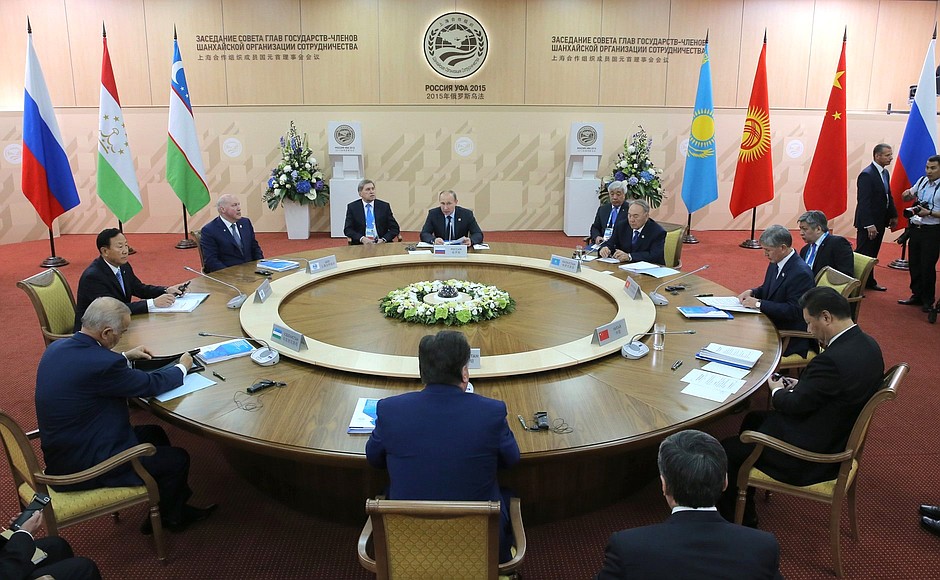
Permanent bodies include the Secretariat and the RATS. Members of SNK meet annually more than three times. Meetings of relevant ministers are appointed as necessary. The Ministerial Council and the CST are held simultaneously with the CGS. The events are chaired by representatives of the host country of the annual meeting. The mechanism for selecting a venue for the summit is simple. All the member states of the association become their masters in turn. Rotation occurs in alphabetical order.
Permanent members
The trend towards gradual expansion has been traced since the organization was formed. At first, however, only the number of states belonging to the category of observers increased. However, in 2017, the association gained two new members. India and Pakistan joined the Russian Federation, China, Tajikistan, Uzbekistan, Kyrgyzstan, and Kazakhstan.
The status of a permanent member gives the right to enjoy the rights and privileges provided for in the charter of the political and economic union. Among them, it is worth noting access to credit and financial resources by decision of the Interbank Association.
Partner States and Observers
There have always been many countries wishing to join the SCO. Suffice it to say that back in 2004, Mongolia expressed this desire. However, the founders are holding back the expansion process. There are good reasons for this.
There are long-standing contradictions between some Asian countries that aspire to membership, which formed centuries ago. A consolidated decision under such conditions is difficult to make. In addition, a large number of secondary partners will reduce the foreign policy weight of the union. Belarus stands out from the general series. The ardent desire of A. Lukashenko to introduce the state into a promising alliance was hindered by nature itself. Too far from Asia is a country that gained independence after the collapse of the great empire.
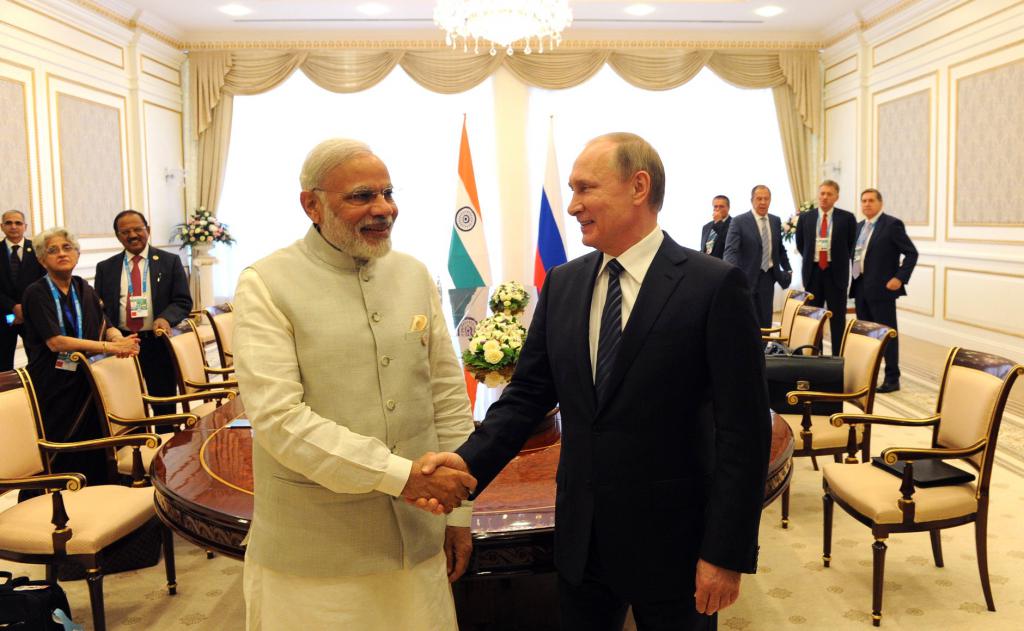
The SCO observer states, along with Mongolia, Belarus are Iran and Afghanistan. The club of official applicants for this status is Qatar, Maldives, Israel, Vietnam, Iraq. Applications from Syria, Bangladesh, Egypt, Bahrain, Ukraine are under consideration. Dialogue partners include Azerbaijan, Sri Lanka, Armenia, Turkey, Cambodia, Nepal.
Authoritative international associations have shown interest in cooperating with the Shanghai organization. The relevant agreements have been ratified with the EAEU, CSTO, CIS, UN, ASEAN.
Unifying factors
At the time of the creation of the organization, the main motive for joining its ranks was the growing threat from world terrorism. For the countries of Southeast or Central Asia, al-Qaida, the Muslim Brotherhood, ISIS were not just words, but a real danger. Russia's military-diplomatic successes on the Syrian front, which made the complete defeat of the Islamic state, inevitably, indirectly helped stabilize the situation in the former Central Asian republics of the USSR.
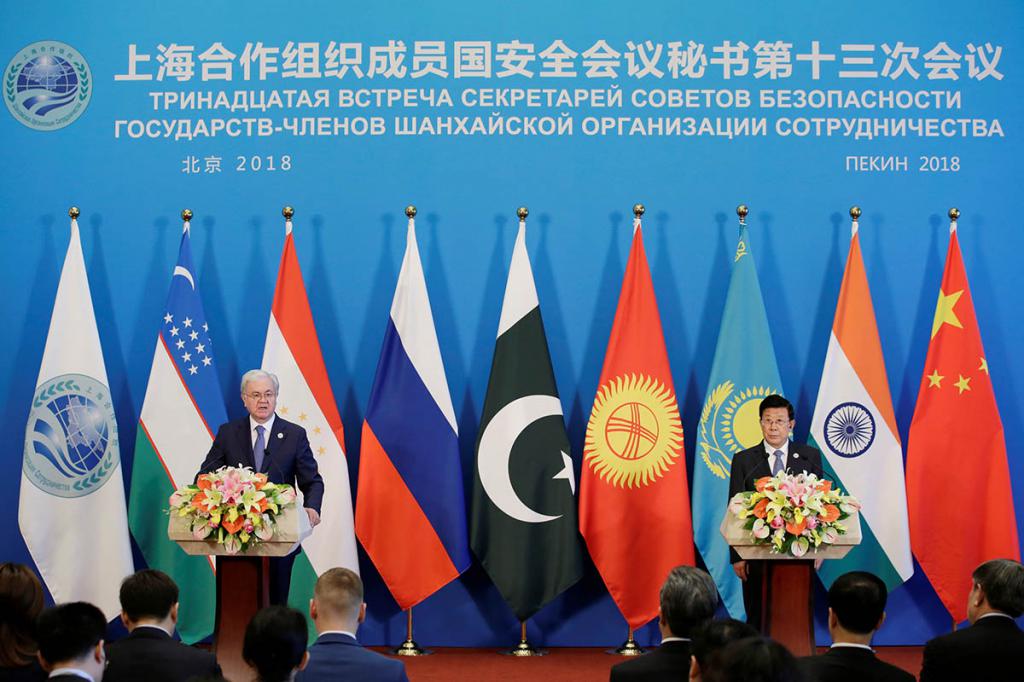
However, the new threat was even worse. The overseas hegemon threw off his mask and showed his real face. The complete neglect of international treaties, the desire for permanent expansion with unlimited use of force, demonstrated by the United States, made us remember the dark era of the Conquest. For most Asian countries, only an alliance with powerful China and Russia can now be saved.
Do not forget that the economic condition of many states in the region does not cause optimism. Investments from India, the Russian Federation, and the Celestial Empire are vitally important for some countries.
Internal contradictions
There are hidden, and sometimes clear, contradictions between members of any major international organization. The Shanghai Eight was no exception. An illustration of this will be the answer to the question - who is the leader in the SCO?
Pro-Western political scientists unconditionally give their leadership in uniting the PRC, with its huge economy. However, Russia openly claims to be the political locomotive of the alliance. The main contradiction between the world allied powers is manifested in goal-setting. Beijing sees the organization as a tool to facilitate the expansion of Chinese products into new markets. Moscow considers the main military-political part of the agreement. At the same time, both empires secretly beware of each other.
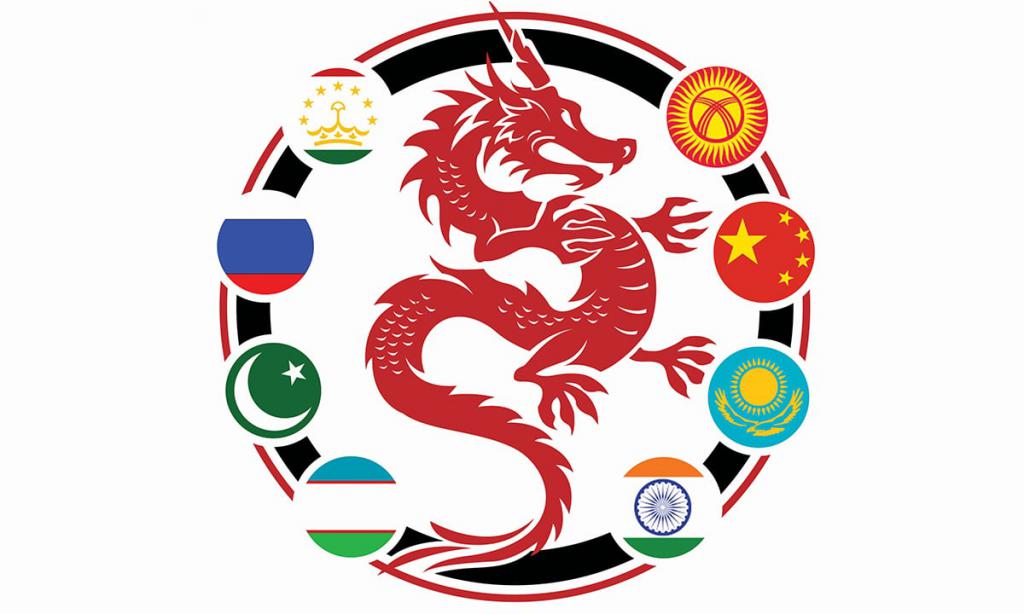
In addition, it is impossible to compare the geopolitical interests of India and Kazakhstan, for example. These countries cannot be compared in terms of population, territory, or GDP. Accordingly, the goals that they want to achieve as members of the organization differ.
For the small states of the continent, joining an alliance with the participation of the largest Asian powers is the only way to maintain full sovereignty. China and Russia, as two counterweights, keep the system in a stable state. They will not tolerate excessive American or European expansion into the region, and they will not allow a violation of the mutual balance.
It is enough to recall how the composition of the organization expanded to 8 members. Moscow responded instantly to Beijing’s proposal to admit a long-time protege to Pakistan, Pakistan. At the same time, India joined the ranks of the association.
Development prospects
The modern world is changing rapidly. The world hegemon of recent decades is going through difficult times. The United States, like any empire entering the sunset era, is gradually losing influence. At the same time, the illusion of omnipotence, formed during the period of undivided domination, persists. Against this background, new centers of power are beginning to assert themselves louder.
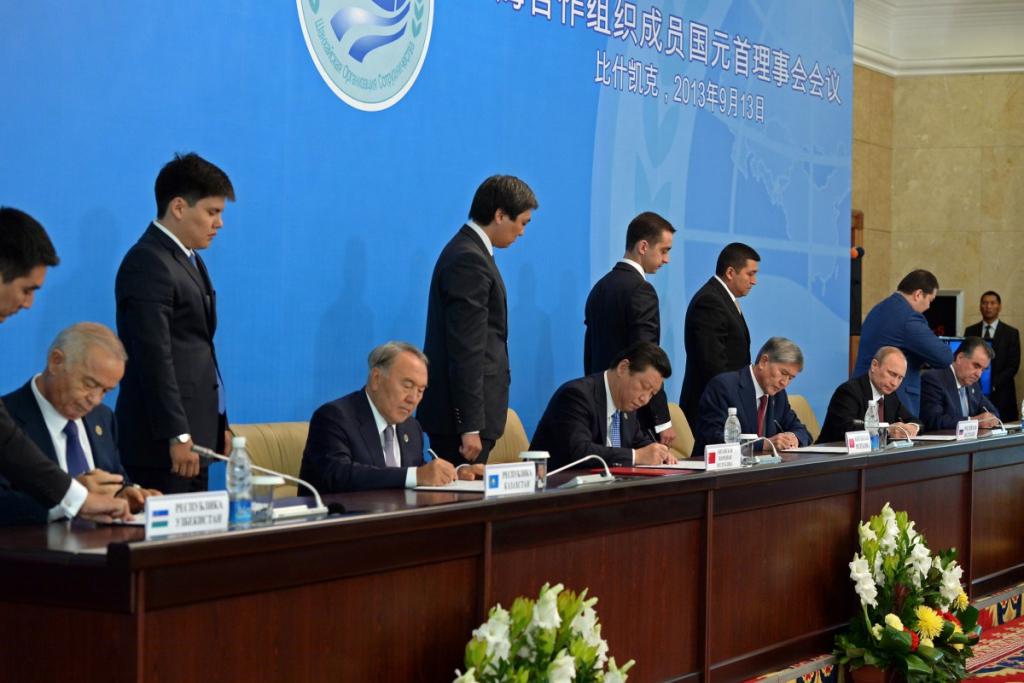
Continuing its ongoing development, the SCO is able to transform from a regional association into an influential world-wide structure. By the way, Washington contributes most to this. The unpredictable foreign policy of the superpower is forcing Asian states to worry about their own sovereignty. Therefore, we can confidently predict that the number of countries applying for membership in the organization will only increase.
Interesting Facts
Finishing the decryption SCO as a term and a phenomenon in international politics, one cannot but give a few curious facts. They testify to the globality and potential power of the organization:
- It unites states that occupy more than 60% of Eurasia. Almost half of the inhabitants of the Earth are concentrated here.
- According to the end of 2017, the SCO member countries produced 30.26% of world GDP.
- The four permanent members of the organization are nuclear powers.
There is another feature that distinguishes the SCO from other regional associations. Among the official languages of the organization there is no English. This status has Russian and Chinese.
